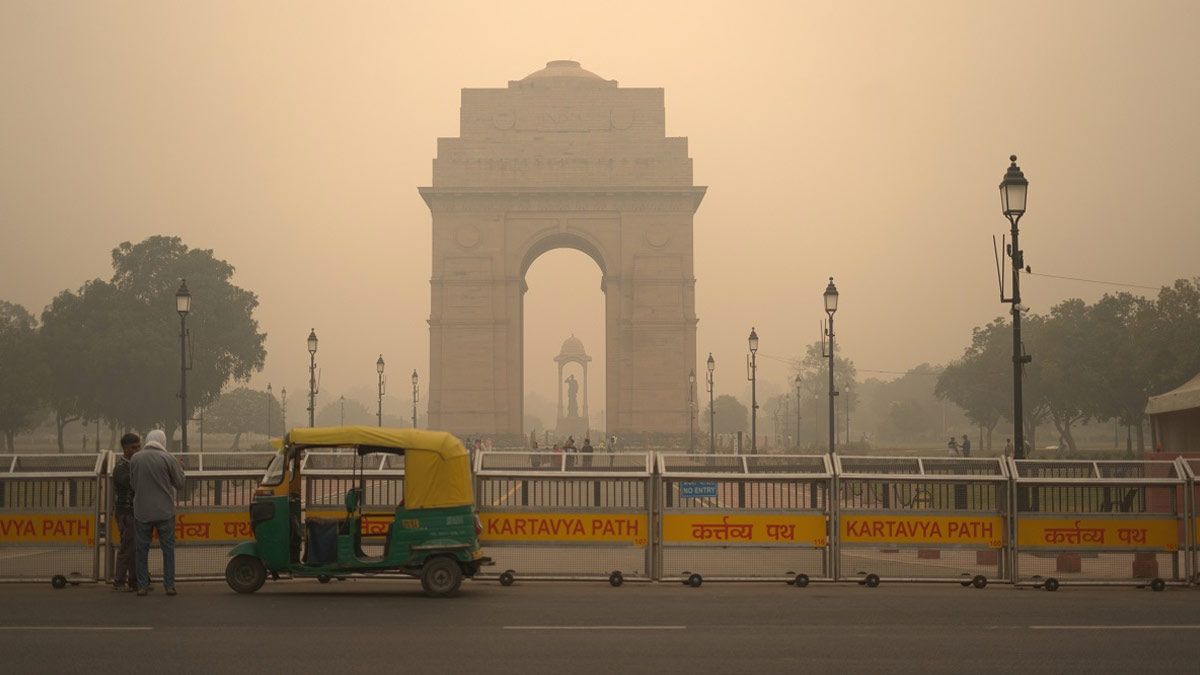Delhi's AQI Hits Hazardous Levels, Residents Warned of Severe Health Risks

New Delhi November 13, 2024: The Air Quality Index (AQI) in Delhi has hit hazardous levels, with the Central Pollution Control Board (CPCB) reporting an AQI of 352, indicating severely compromised air quality. The NCR's capital city is one of the most polluted cities in India, alongside Ghaziabad and Sonipat.
The smog, which reduced visibility on many roads and buildings, poses significant health risks for residents, particularly those with pre-existing respiratory conditions. Air pollution experts have highlighted that prolonged exposure to high levels of pollutants can lead to severe symptoms such as coughing, throat irritation, breathlessness, fatigue, chest pain, and exacerbation of chronic respiratory issues.
The AQI in Delhi fluctuated between 'very poor' and 'severe' categories, with specific areas recording AQI levels exceeding 400, classified as 'severe.' Wazirpur, Jahangirpuri, and Anand Vihar recorded AQI levels of 421, 419, and 403 respectively. Areas such as Ashok Vihar, Burari, and Pusa reported AQI readings close to 400, hovering in the 'very poor' range.
The situation is expected to persist due to unchanged weather conditions, which are aggravating the air quality crisis. Low wind speeds and high humidity have been attributed to persistent smog. With low winds and high moisture levels, pollutants are trapped near ground level, preventing the smog from clearing.
"We urge residents to limit outdoor activities, especially strenuous exercise, which increases the risk of inhaling more pollutants," said Dr. [name], an expert in respiratory medicine. Wearing masks designed to filter out fine particulate matter (PM2.5) is highly recommended for those who must go outdoors.
Government measures have been introduced to mitigate the effects, including increased monitoring of construction activities, vehicle emissions, and industrial pollutants. The Delhi government has reintroduced the 'Odd-Even' scheme to reduce vehicular pollution and promoted the use of public transportation. However, residents are calling for long-term, impactful solutions that address pollution sources.
Residents can take proactive steps by limiting time outdoors, particularly for young children and the elderly, and prioritizing indoor activities during periods of intense smog. Indoor air purifiers with HEPA filters can help improve air quality inside homes.
The Delhi government has been urged to prioritize clean air policies for both public health and environmental sustainability. Without sustained efforts to address pollution, the city's notorious congestion and respiratory issues may persist.
AQI Breakdown
- [ AQI level ]
- Areas affected: Wazirpur, Jahangirpuri, Anand Vihar
- Nearby areas: Ashok Vihar, Burari, Pusa
Health Risks
Prolonged exposure to high levels of pollutants can lead to: - Coughing and throat irritation - Breathlessness - Fatigue - Chest pain - Exacerbation of chronic respiratory issues - Cardiovascular diseases
